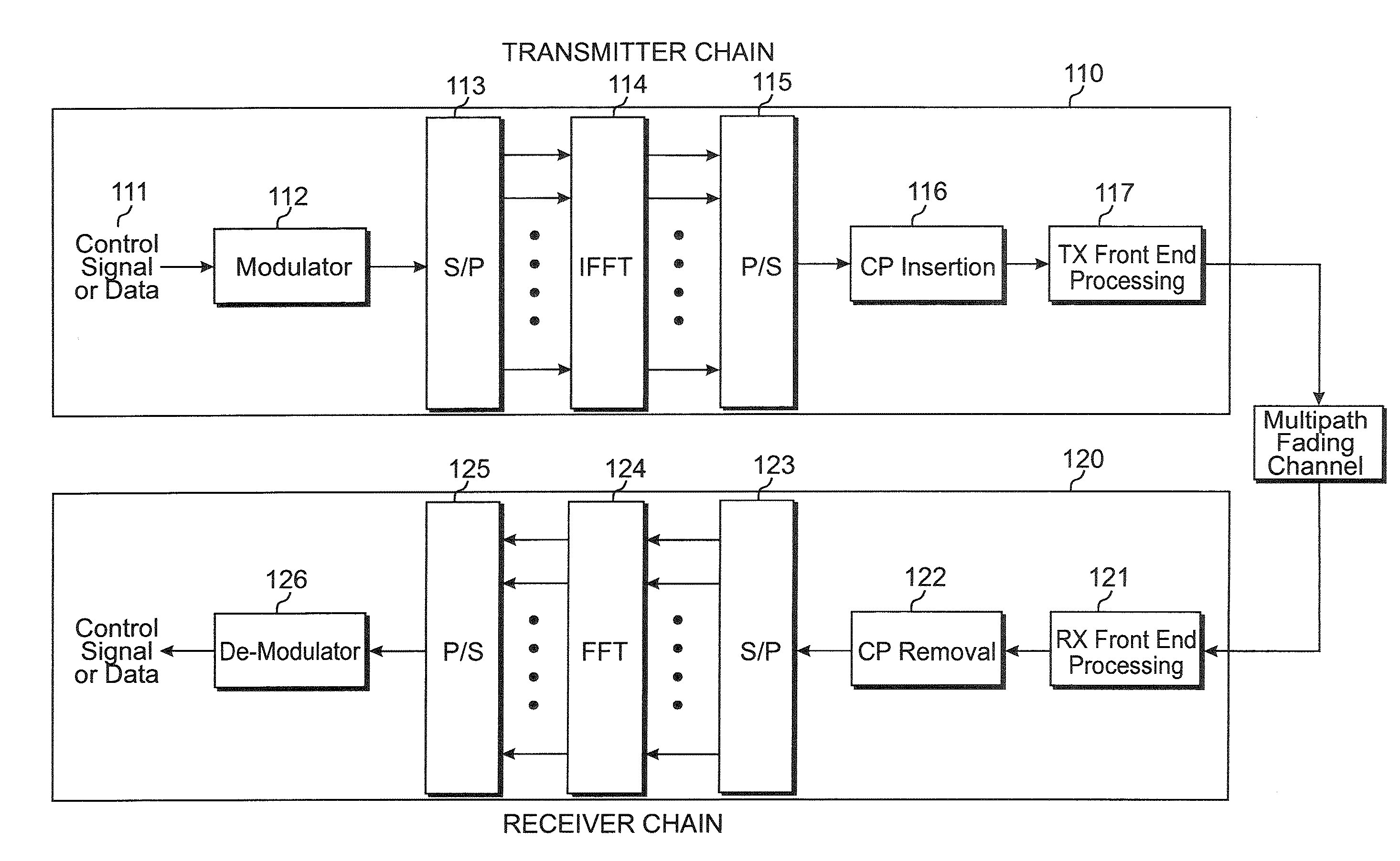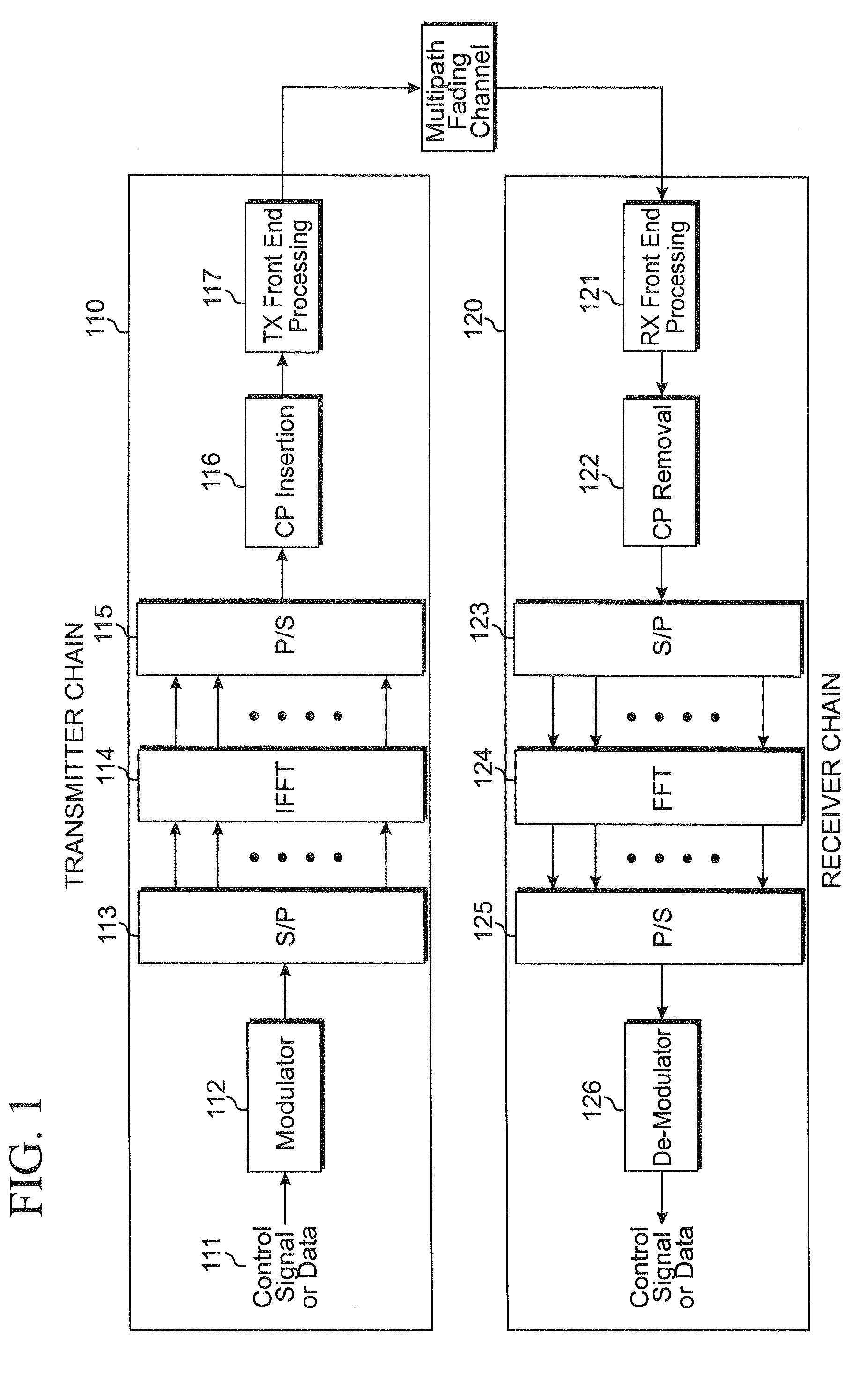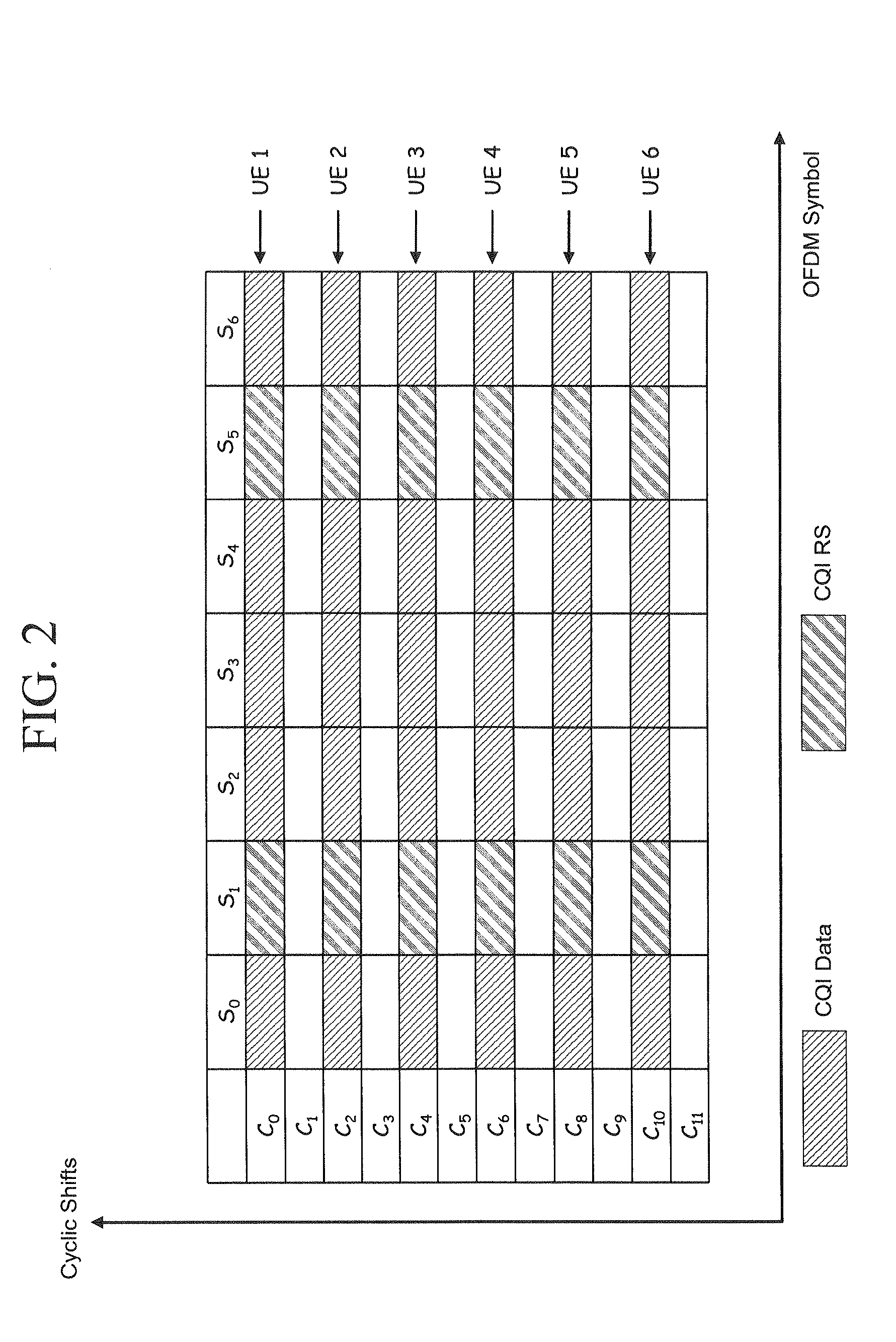Resource remapping and regrouping in a wireless communication system
a wireless communication system and transmission resource technology, applied in multiplex communication, data switching networks, orthogonal multiplexes, etc., can solve the problems of inconvenient storage of the remapping table and the remapping table based approach
- Summary
- Abstract
- Description
- Claims
- Application Information
AI Technical Summary
Benefits of technology
Problems solved by technology
Method used
Image
Examples
first embodiment
[0053]In a first embodiment according to the principles of the present invention, we propose a resource permutation function that is based on Galois field operations. Let N be the total number of resources being permuted, the operation of permutation function is given by:
j=PG(i,n,N) (1)
where i 1, . . . N is the index of the input resource index, j=1, . . . , N is the output resource index, and n=1, . . . , N is the permutation sequence index, since a different n provides a different permuted output.
[0054]We first consider a case where N is an integer that satisfies N=pm−1, where p is a prime number and m is a positive integer. In this case, Galois field N+1 exists and we denote it by GF(N+1). In addition, we can find a primitive element of this Galois field and call the primitive element α which satisfies αN=αpm−1=1, and α is an integer. In addition, all N non-zero elements in the GF(N+1) can be expressed as an exponent of α, or in another word, the sequence α0, α1, . . . , αN−1 in...
second embodiment
[0076]In a second embodiment according to the principles of the present invention, let there be N OC / CS resource combos in both slots of an uplink subframe. We propose to associate the OC / CS resource combos in such a way that if a UE picks the resource combo CB1[i] in the first slot, then the UE must be assigned CB2[g(i,n)] in the second slot, where g(i,n) is a pseudo-random resource remapping / permutation function, and n is a parameter.
[0077]In a first sub-embodiment of the second embodiment according to the principles of the present invention, the pseudo-random permutation function is established as:
g(i,n)=PG(i,n,N), (8)
where n is chosen from the set {1, 2, . . . , N}, or n=1, . . . , N. The function PG(i,n,N) is defined in the previous section.
[0078]In a second sub-embodiment of the second embodiment according to the principles of the present invention, the pseudo-random permutation function uses the PBRO function in such a way:
g(i,n)=PBRO(mod(i+n−1,N)+1,N) (9)
The function PBRO(...
third embodiment
[0086]In a third embodiment according to the principles of the present invention, we propose to assign the subset Si and Sj to slot 1 and 2 in a subframe, for all UEs within a give cell. In addition, we propose to associate the indices of subsets, i and j, with the CELL ID, denoted by c_id. One example of this association is:
i=mod(c_id−1,4)+1, and j=mod(i+n−1,4)+1 (11)
where n is a positive integer. Once the indices i and j are available, for this cell whose CELL ID is c_id, we let:
OC1[1]=Si(A),OC1[2]=Si(C),OC1[3]=Si(B), (12)
for the first slot, and let:
OC2[1]=Sj(A),OC2[2]=Sj(C),OC2[3]=Sj(B) (13)
for the second slot.
[0087]Note that this embodiment applies to, for example, both N=18 and N=12 examples shown in Table 2 and Table 4 above.
[0088]2.2 Intra-Subset Resource Remapping
PUM
 Login to View More
Login to View More Abstract
Description
Claims
Application Information
 Login to View More
Login to View More - R&D
- Intellectual Property
- Life Sciences
- Materials
- Tech Scout
- Unparalleled Data Quality
- Higher Quality Content
- 60% Fewer Hallucinations
Browse by: Latest US Patents, China's latest patents, Technical Efficacy Thesaurus, Application Domain, Technology Topic, Popular Technical Reports.
© 2025 PatSnap. All rights reserved.Legal|Privacy policy|Modern Slavery Act Transparency Statement|Sitemap|About US| Contact US: help@patsnap.com



